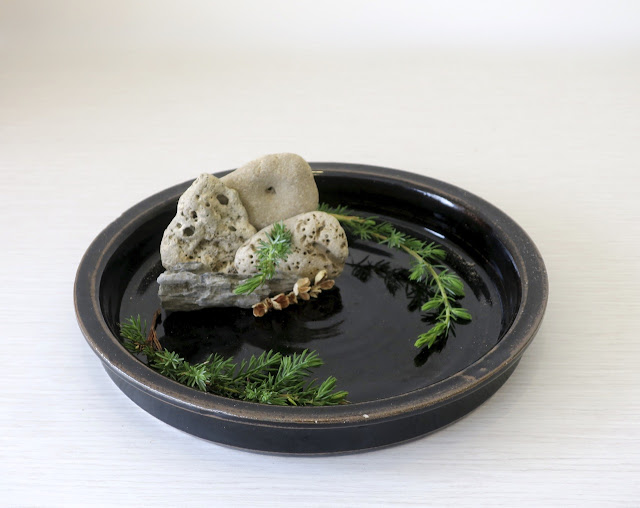Last weekend I attended the annual Pottery Expo at Warrandyte, which takes place on the last weekend of February. It was my first visit to the Expo, as Warrandyte is on the opposite side of Melbourne to Torquay and a two hour drive from here. Of course, I should have made the effort earlier.
The event is held beside the Yarra River in the form of an open-air market and was inaugurated in 2001. On this occasion it featured stalls of more than 60 potters from around Australia. Informative presentations on a variety of ceramic-related topics, as well as hands on opportunities, made for a rich experience. Although on a different scale, the event brought back memories of visiting Mashiko in Japan for the Spring Kiln Opening in 2011.
My first preference in ceramics is for wood-fired work and I was not disappointed on this occasion, as seen above here...
...and again in this stall. However, the variety of styles was huge and dare I say it, there was something for everyone.
* * * * * *
While in Melbourne, I visited the Botanic Gardens as usual. I have been particularly interested to watch the development of the Bromeliad flower that I first showed at the beginning on February. Now identified as B. pinguin. The first two photographs were posted previously.
This on the 5th February...
...and this on the 12th February.
By the 16th February the flower head had opened fully. I was a bit surprised that its colours were pale pastel compared to other more familiar Bromeliads.
Spectacular though this plant is, it would be a difficult subject for ikebana; not the least because of the sharp thorns on the leaf margins. However, my ikebana subject this week turned out to be difficult for different reasons.
I noticed this Kniphofia had grown from the garden bed below and rested its flowerhead on the front landing of the flat.
The flower was hard up against the balustrade.
This was my first view of it as I came out of the front door. The curl of the stem appealed to me and I imagined it twining around a tall vase. I thought it called for a modern contemporary look and decided to use a conical stainless steel vessel with irregularly positioned holes. I soon discovered that twining was not going to happen. Because the stem had been supported by the surface of the landing it had not developed sufficient strength to support the flower head.
The weakness of the flower stem called for something completely different from my imagining. Twining around the vessel was not going to happen. Above, the stem passes through holes on opposite sides of the vessel and leans forward. I needed something to secure the bottom of the stem and decided the stainless steel cutlery-drainer would be suitable. However, this is not good ikebana for several reasons. The focal point is on the left, leading the eye out of the ikebana; the vessels are too far apart; and more plant volume is needed.
My solution to was to rotate the conical vessel, bringing the focal point in to the middle of the ikebana. The space between the vessels is much reduced by moving the cutlery drainer to the back and I have added an extra line in the middle, increasing the sense of volume there. The strong line arising from the cutlery drainer leads up to the focal point and then back down again. This creates a circular movement within the ikebana.
For me this was a lesson in accepting the limitations of the material. Also of letting go of my preconceived idea about what I had planned to create.
Greetings from Christopher
5th March 2022









































